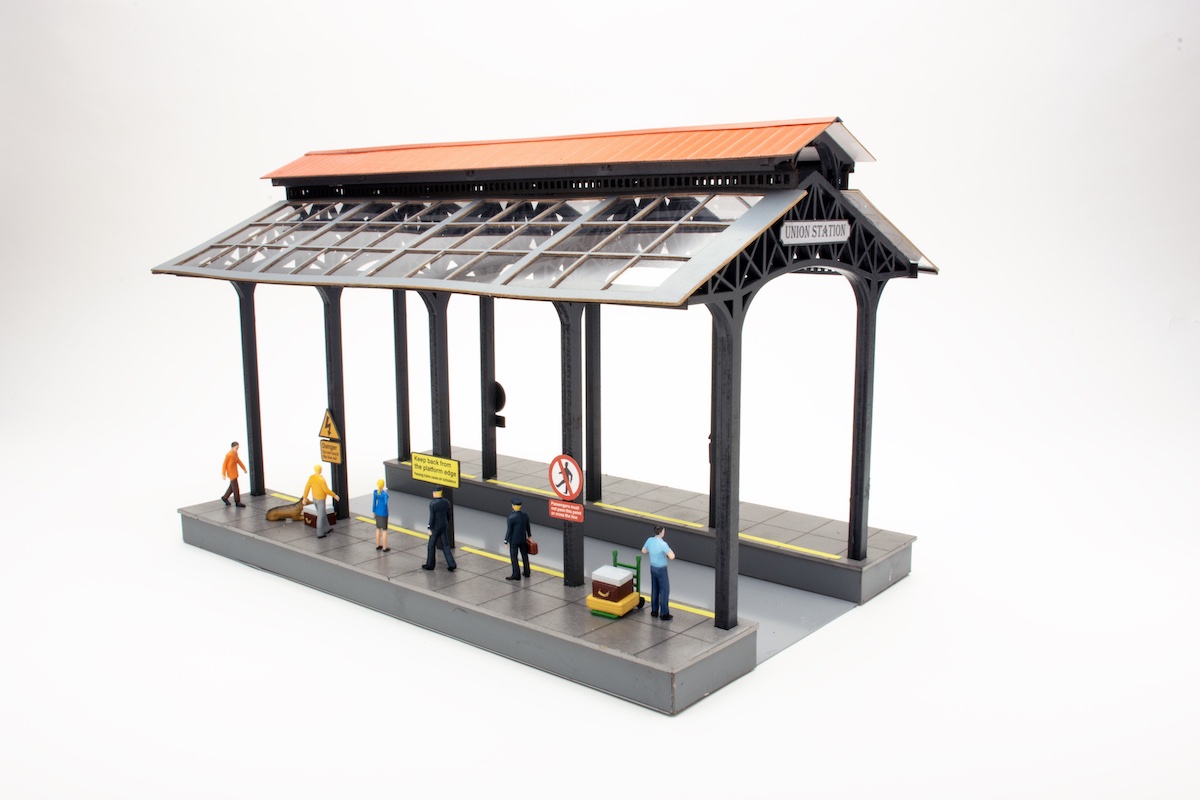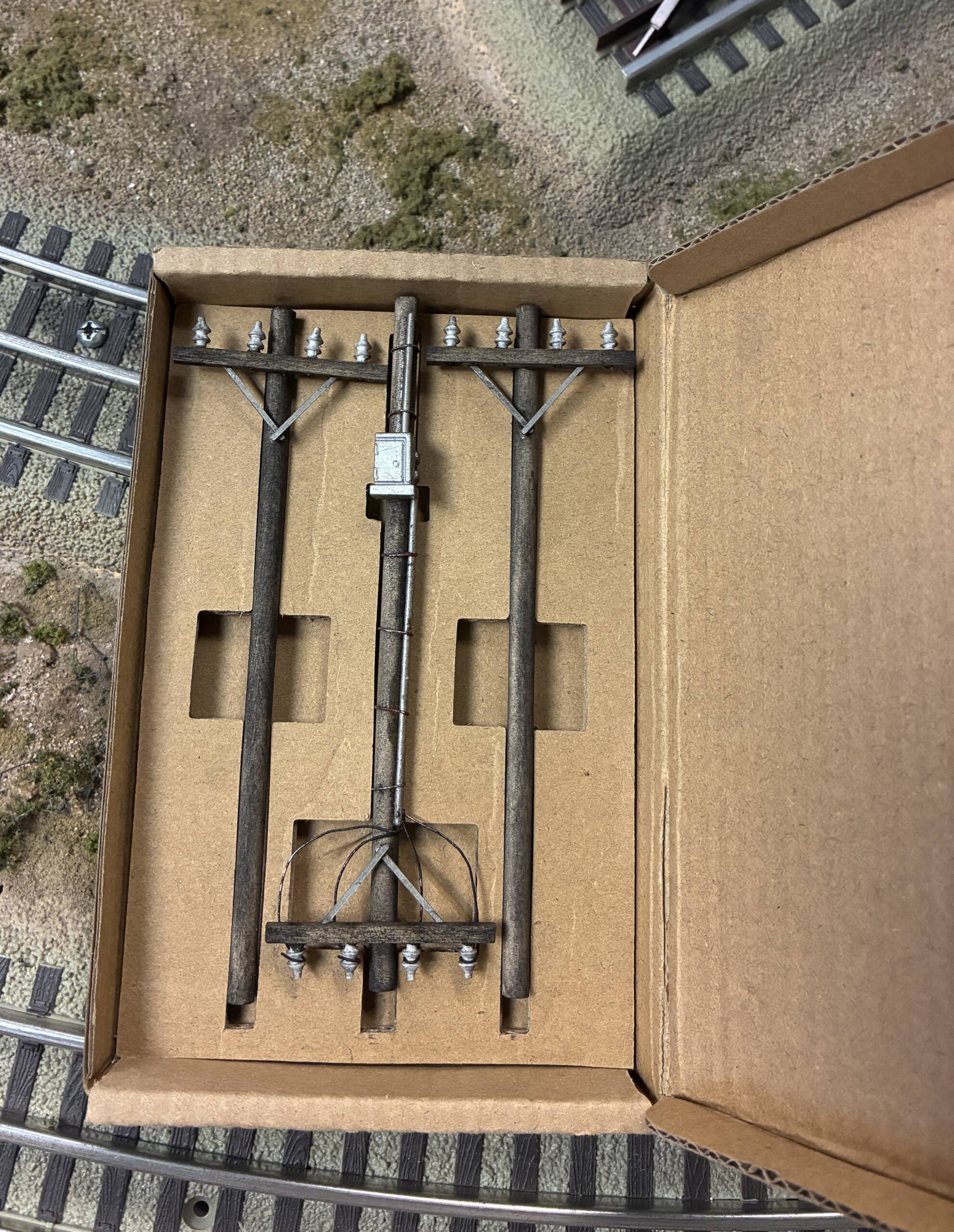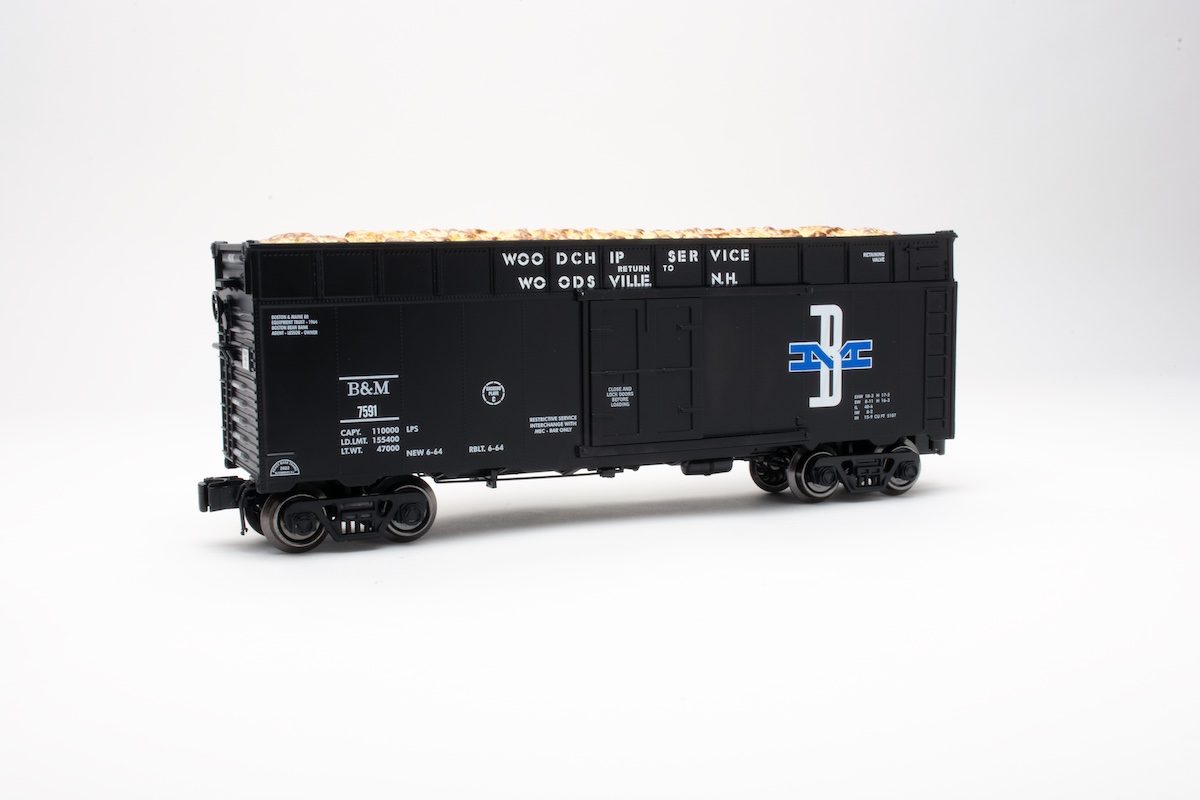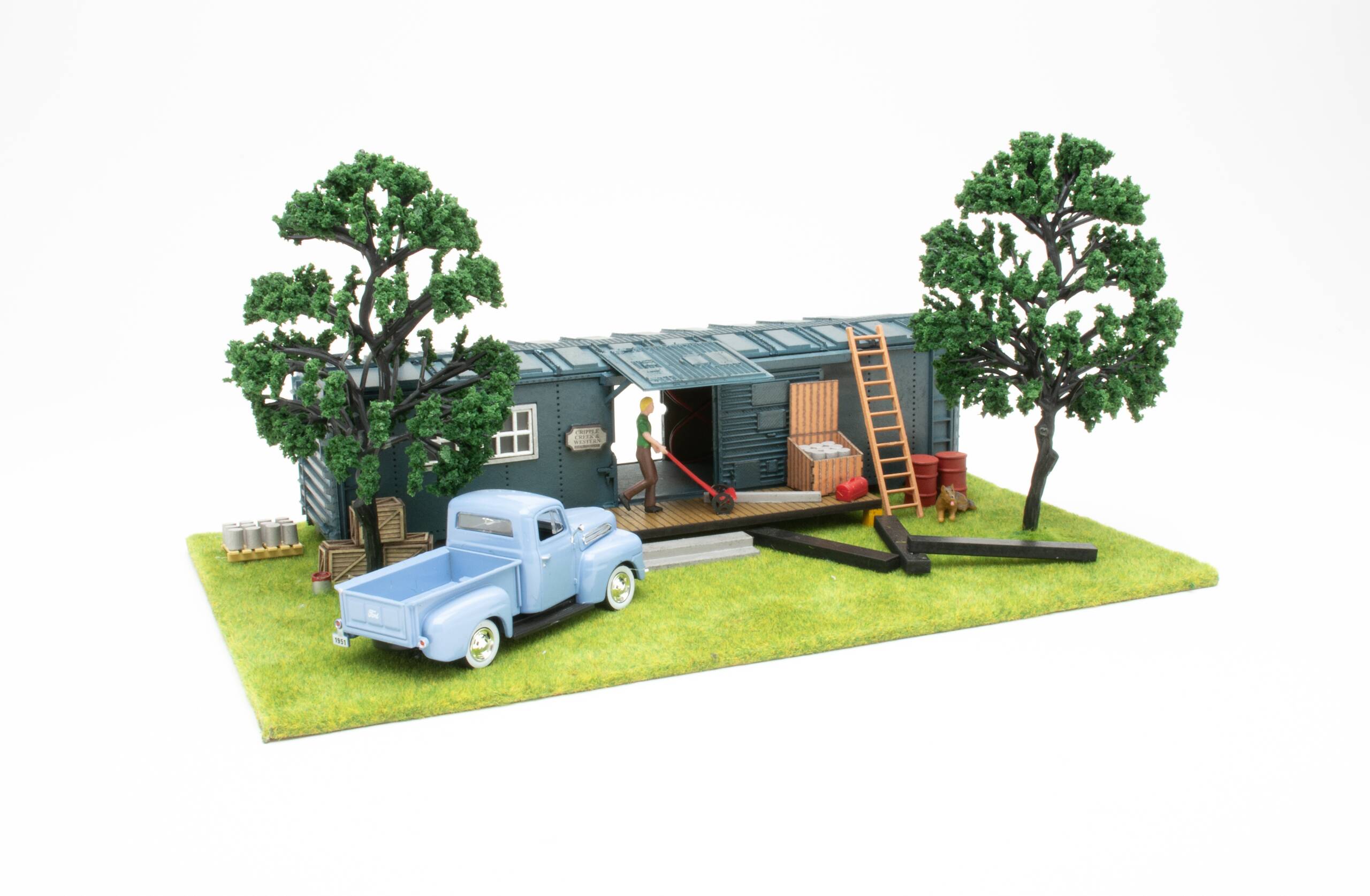Opened in 1885, the Gotthard tunnel was a significant engineering feat. The 9-mile long line hosted a 2.9 percent grade and was an important link for rail service between Switzerland and Italy.
Originally, trains passing through the tunnel required multiple steam locomotives; later, they were powered by Swiss Ry. C 5/6-class 2-10-0s, which have been called “power plants on wheels.” When the line was electrified in 1916, an articulated electric locomotive was designed to accommodate the incline and the gyrations of the route.
Two runs of Crocodiles were manufactured: 33 Ce 6/8II models from 1919 to 1921 and 18 Ce 6/8III models built from 1925 to 1926. The MTH O gauge replica models the Ce 6/8 II version.
The Crocodiles had two powered ends that used six powered axles (three on each end) that were, uniquely, driven by a jackshaft. Initially, the locomotive was operated with both pantographs extended.
These were not speed demons by any means – a 1950s upgrade increased their high speed from 40 to 48 mph! The locomotives dominated the Gotthard line until being replaced by newer power in the 1950s, and many continued to serve Swiss electrified lines until the 1980s.
The Crocodile is an internationally familiar body style, and several were preserved.
Opening the box
For starters, this model is 1:45 scale O, which means it is slightly larger than a 1:48 scale model. Still, I was surprised at how compact (I won’t say small) the model was. I think I was expecting something the size of a Little Joe electric. But then reality kicked in – the prototype’s purpose was for besting a 9-mile stretch of tight tunnel. You didn’t need a Milwaukee Road bipolar-sized engine for that.
My first impression was favorable. The model looks trim yet industrial. My eyes weren’t drawn to the side rods, but to the pantographs and the wild array of topside wiring. Read a bit more about that later.
The locomotive is an articulated rig – there is a central cab plus two motor units hinged to the cab. This isn’t at all dissimilar to the MTH’s Pennsylvania RR L5 electric locomotive (which I dubbed the “Wonkavator” in its CTT review). Each motor unit has a two-wheel pilot and six drive wheels powered by a jackshaft that rotates and in turn drives the side rods.
Each motor unit has spring buffers, appropriate air and cable lines, a small drop deck, the aforementioned lights, and two small staffs, presumably for flying classification flags.
Each side of the hood has three pairs of cast-in louvers. There are grab irons running in a “U” around the hood.
The running boards are smooth, free of any safety texture.
On top of the motor hood are three sets of hatches, two small and one large. All three have hand, grab, and latch detail.
One set of hatches is removable and hides pantograph/track power selection levers, should you want to power your locomotive from overhead wires. The matching hood on the opposite motor has selectors for DCC/DCS, automatic pantograph operation, and a volume control.
The central cab segment has no fewer than six doors! Four are conventional side-of-the-cab entries with steps and add-on wire grab irons, while the others are unique. The cab has four angled corners. Each corner has a grab iron, but two have doors for accessing the running board.
As with the hoods for the motor units, the cab has a good level of cast-in rivet and seam detail.
The roof is well detailed. The pantographs are finely done, and the mounting insulators and supports are cool.
There is an orange line (I presume is a cosmetic power feeder) running from the pantographs through 21 green insulators. There is also a wood plank deck beneath the main run of wires on the side of the cab, while there are two separate planks on the opposite side.
There are also some slightly curved metal supports beneath the outward base of the pantographs and extending beyond the roof, over the cab windows. These are perforated as if designed for rainwater to flow through them. This is just another example of the eye-catching detail found on this MTH model.
The running gear is very interesting. The jackshaft rotates and moves a rod that’s connected to the lead drive wheel and to a counterbalance weight just beyond the lead driver. This rod is also connected to a rod that mates with the middle drive wheel. This driver is connected (through a third rod) to the rear wheel. So there is a lot of rotation and movement when this model is underway.
Take care in handling this unit. The steps on the ends and at the cab doors are easy to bend.
Painting and decoration were well executed. The subdued paint scheme was properly applied. There are some nomenclature items, such as a builder’s plate, engine number, and locomotive class, which were crisp and easy to read.
On the test track
Firing up the Croc, you hear what can be described as a hair dryer sound. You know, the sort of blower noise an electric locomotive makes to cool down the warm electronic components.
Once the locomotive gets going, the sound evolves into a whooshing tone.
The bell is fairly conventional in sound, but the high-pitched whistle will have you reaching for your papers to hand the Swiss customs officer coming down the aisle.
Getting underway, the syncopation of the side rods is no less eye-catching than those of a steam locomotive. In particular the rotation of the jackshaft.
Motor operation was smooth and quiet in conventional and command modes.
Our conventional-mode low-speed average was 4.8 scale miles per hour, while the command-mode low-speed was 3.5 scale miles per hour. Our high-speed average was 56.9 (faster than the real locomotive’s high speed).
Drawbar pull was 1 pound, 12 ounces.
The locomotive has cab illumination when still, and then the light goes out when it’s moving. There are three large lights on each end. When moving forward, all three lights are illuminated white; on the rear side, two lights are off, and the lower right light is red.
When you change the model’s directions, the lights all change accordingly.
The model features coil couplers on both ends.
There are four power pickup rollers on the locomotive, two on each motor unit. Each truck mount is two inches apart, while the total footprint for the pickup rollers is about seven inches.
The Crocodile has MTH’s automatic pantograph feature. When powered up, one pantograph elevates. When you change direction, it lowers and the other then goes up. A topside access hatch reveals a pantograph on/off control. The sequencing worked correctly, without hesitation, every time I changed direction.
This was a fun locomotive to operate!
The MTH Crocodile captures the look of the Swiss tunnel-motor with detailing you can see and touch. Operations were silky smooth, and the self-functioning pantographs add a little pizzazz to your running.
If you’re a fan of electric traction, you will want to take a close look at this O gauge model.
Features: O-42 operations, 1:45 scale, two can-style motors, ProtoSound 3.0 command and sound system














